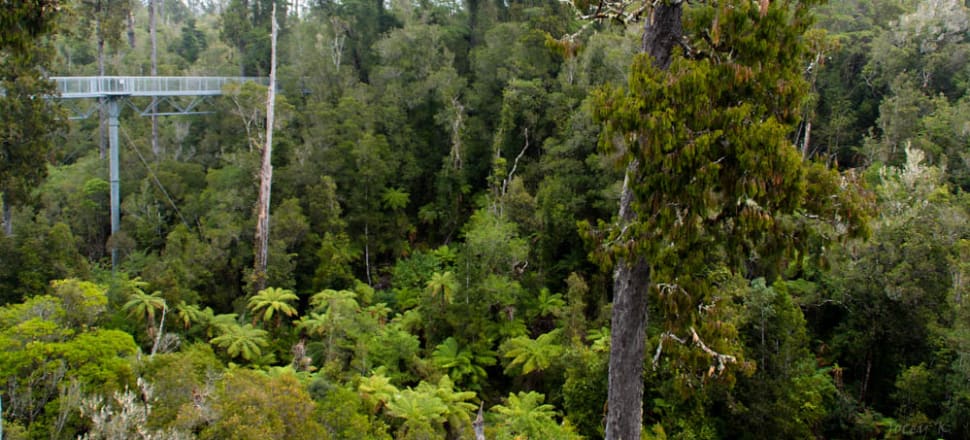
Environmental and local authority interests are in conflict as West Coast public conservation land is divvied up
A so-called expert panel reviewing the status of stewardship land on the West Coast has got it wrong in more than half the cases it assessed, according to the Environmental Defence Society.
The society, led by lawyers and environmental professionals, has filed a submission on proposals to reclassify or sell land assigned to the Department of Conservation in the 1980s but only now being assessed for its true conservation values.
Nearly a third of the West Coast’s public conservation land falls into the stewardship category.
The specialist group appointed by the government and advised by a mana whenua panel has recommended reclassifying 77,000ha as national park, 347,000ha as conservation park, 87,000ha as historic reserve and selling 66ha.
Former Conservation Minister Kiri Allen congratulated the panel in May on doing an “outstanding” job.
But Environmental Defence Society chair Gary Taylor says it went well off-piste in its decision-making process and the recommendations are seriously flawed.
“The panel has not properly undertaken an assessment of the ecological and cultural values of the land in the way the legislative framework requires,” Taylor says.
Of 504 land parcels under review, the panel had recommended insufficient protection for 282 with high conservation values, he says.
Under its terms of reference, the panel had to consider the ecological values of the land, the status of adjacent land and the Climate Change Commission report.
“But it failed to focus on its terms of reference and the legal framework. It’s gone off on sidebars that were simply not relevant to its task and it has got more wrong than right.”
Hard to fathom
The submission is based on a report by ecologist Mike Harding, who was commissioned by the society to carry out an independent review of the panel’s work.
Harding says some of the recommendations are incomprehensible.
“North of Hokitika, for instance, it said 40 land parcels should go into national park, but in all of South Westland it has recommended just four small blocks. It has left out areas with outstanding ecological and obvious scenic values - even World Heritage areas.”
The panel seems to have based some recommendations on factors outside its brief, including potential uses of the land such as mining and tourism, Harding says.
Nearly a quarter of its recommendations are for conservation-park status, offering less protection than scenic reserve or national park and allowing a far greater range of recreational and commercial activities.
Buller Mayor Jamie Cleine says that seems reasonable to him.
“There is land that can justifiably be added to the national parks, but it’s important that we retain as much land as possible for potential other uses like mining and recreation and tourism.
“It should be allowed to consider the economic impact of the land status. It’s a crucial factor in this region where so much land is already in the DoC estate.”
West Coast Regional Council chair Allan Birchfield – who’s a Greymouth gold miner - was clearly exasperated by the society’s stance when Newsroom sought comment.
“These people are never going to be happy till they’ve locked everything up, depopulated the coast and moved us all out,” he says.
One recommendation cited by Harding involves 11,000ha of Buller’s coal plateau ecosystem, including the largest remaining relatively intact area of the Stockton plateau, and many threatened species.
The panel describes the area as having high ecological values but recommends conservation-park status to “facilitate public recreation and enjoyment of the area”.
The mana whenua panel wanted the area to remain as stewardship land because it adjoins an area being considered for “mine remediation”, Harding says.
And in South Westland, conservation-park status was recommended for the outstanding World Heritage area and large tracts of land linking adjacent national parks.
Out of line with values
“The panel’s recommendations don’t reflect the values described in the conservation value report, values acknowledged by the area’s World Heritage status,” Harding says.
The Waitangi Forest and Cook River/Weheka to Haast River, including the Arawhata stewardship area, should be classified as national park, scenic reserve, wilderness area or sanctuary, Harding says.
He also queries the panel’s recommendation to class 250,000ha of mountain country near Arthurs Pass as “Tarahanga e Toru Historic Reserve”.
Its justification was that the area was the heart of Poutini Ngāi Tahu legends, customs and traditions centred around pounamu, Harding says.
“But the area is far more extensive than required and the few actual historic sites are mostly gold-mining relics.”
Adding the area to Arthurs Park National Park would properly recognise its high conservation values and could also provide mechanisms for protecting cultural values, Harding suggests.
“The panel’s recommendation to consider disposal of ‘pastoral’ parts of floodplain land conflicts with the Climate Change Commission report, which seeks to reduce emissions from agriculture and incentivise the establishment of new native forests.”
Taylor says while the government tries to work out how to give effect to the principles of the Treaty of Waitangi as the Conservation Act requires, the panel seems to have anticipated potential changes.
“In a sense the stewardship land review is both overdue and premature - I know the Ngāi Tahu panel would have preferred to wait until the act’s been updated.
“And we all need to do some really considered talking about how you give effect to the treaty as the act requires, and how to accommodate all cultural values in the 21st century.”
But the panel has strayed too far from its terms of reference and the current legal decision-making criteria, Taylor says.
“We are a public-law group; we would expect to see the existing law applied properly, and we would expect the minister to make her decisions based on our submission, not he panel’s recommendations.”
And if that doesn’t happen, he says, the 30-year-old issue is likely to play out in court.
Made with the support of the Public Interest Journalism Fund








